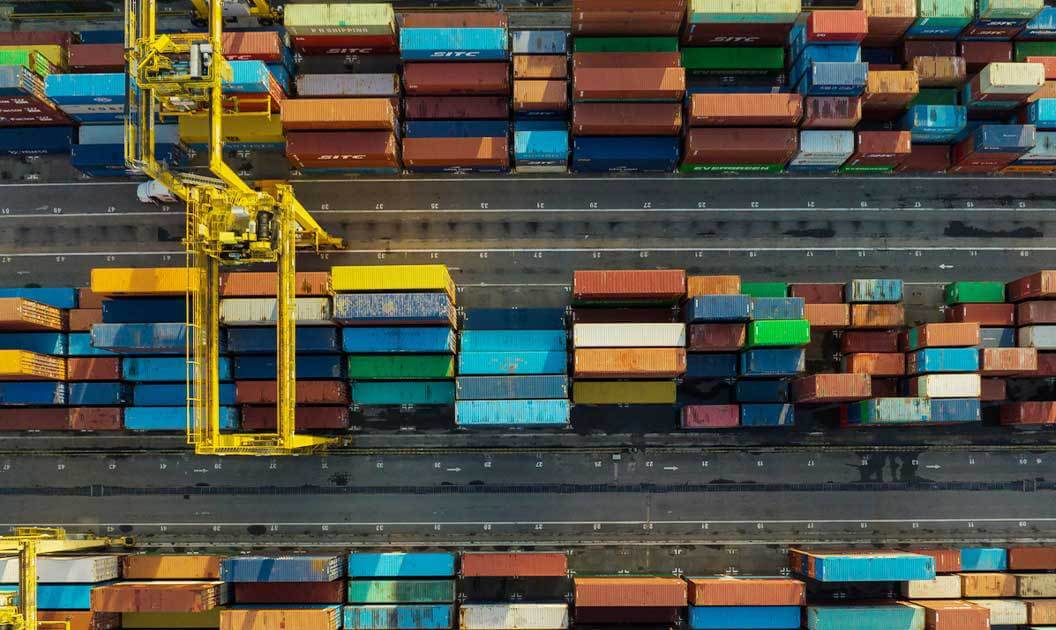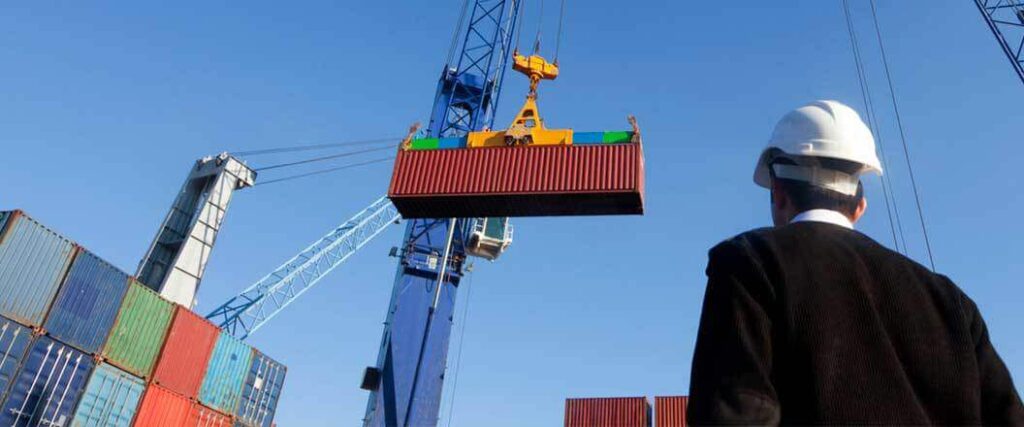
A customs hold can interrupt your import process, leading to delays and business disruptions. Understanding the reasons behind these holds is essential for smooth importing. However, that also means knowing what triggers a hold in the first place. The right knowledge and preparation make for a better import experience.
Customs and Border Protection (CBP) defines a customs hold as a suspension of goods at the border. It's a critical enforcement measure to ensure compliance with various import laws. There are different types of customs holds due to the many reasons goods might need to be withheld. There are holds for inspection, documentation issues, or security concerns.
Let’s take a good look at a wide variety of different holds and what you can expect if they are applied to your imports.
A customs hold occurs when the U.S. Customs and Border Protection (CBP) decides to suspend, or hold, your goods at the border. It’s not a full seizure of your goods. Most holds are temporary, but that doesn’t mean they’re easy to navigate.
Holds are often driven by a need to verify a shipment is complying with import regulations. It’s a reality that every importer could face, and understanding and knowing how to navigate them can smoothen your import process significantly.

Customs holds aren't one-size-fits-all. They come in several types, each triggered by a specific issue related to your shipment. Let's break them down one by one.
Related: How Can I Speed Up Customs Clearance for Imported Shipments
First off, we have inspection holds. This type of hold is used when CBP decides your shipment needs a closer look, usually for verification purposes.
This type of hold is often confused with a regular inspection. However, there's a significant difference.
Inspection holds go a step further because they tend to include the involvement of partner government agencies (PGAs).
Some of the more common agencies involved include the:
Of these, the FDA, USDA, and CPSC are the ones that work most closely with the CBP. However, any PGA can also make a request of the CBP to hold a shipment.
An inspection hold is also referred to as a:
For the importer, these types of holds usually end up in a significant amount of time lost. Due to the in-depth nature, these holds can take several weeks to resolve. The size of the shipment and the nature of the regulations are also factors.
Provided everything meets regulation, your shipment will be released, sometimes in just a few days. Many small violations found during inspections can be fixed. However, any customs shipment on a hold has the potential to escalate into a full seizure.
The best way to avoid a lengthy inspection hold starts with proper declaration when entering the country.
Learn more about CPSC holds and how to avoid them.

Working with a Licensed Customs Broker can help you clear holds fast!
Get 45 Minutes of Licensed Expert Consulting To Personally Guide You.
Getting all your details right on any paperwork and making sure labels match up has a big impact.
Documentary holds come into play when there are inconsistencies, errors, or missing information in your shipping documents.
These errors can appear on a(n):
Any document can have an error that triggers a documentary hold, but these are the most common since they are part of most shipments.
Other ways of referring to a documentary hold are as a:
Whether one term or the other is used could depend on the issuing officer or the type of data being questioned.
Documents connected with specific agencies are likely to be inspected more closely. For example, the FDA is going to be checking for specific health certificates and making sure that labels contain all the right information.
Usually the only major issues with these holds is the time lost while mistakes are corrected. However, there is a chance that goods will be denied entry. This means you would either need to re-export the products or have them destroyed.
Even if goods are packaged the right way and the documents are correct, certain products can still trigger a security hold. Security holds are imposed mainly when there's a potential risk to national security.
Security holds are also known as an CET Hold, or A-TCET. It refers to inspections carried out by the Anti-Terrorism Contraband Enforcement Team.
The nature of the risk could be due to the actual product or simply where it comes from.
It’s not necessarily the obvious risks that trigger these, such as ammunition or weaponry. These items can be imported legally provided all documents are in place. Granted, the hold will typically still be issued, but people actively involved in this form of controlled trade know to expect it.
Improperly declared hazardous material is how new importers often trigger this hold. These are usually found during a standard customs exam.
A shipment’s country of origin could also trigger a security hold in some of these cases:
In the case of health hazards, some countries deal with endemic diseases. It basically means that the diseases are common within that limited area, but follow predictable patterns, like malaria.
The best way to reduce the risk of security holds is by accurately classifying your goods. Be sure to declare any hazardous materials properly, and be aware of any restrictions relating to your shipment's origin or destination.
If containers or goods are being suspended because of a statutory hold, then simply put, something illegal is taking place.
A statutory hold is only placed on products believed to be in direct violation of U.S. laws.
Consequences for this type of hold are serious. It’s seen as a deliberate violation of law, so importers are subject to severe financial penalties and legal actions.
The hold is often because of import issues such as:
While this problem seems to have a simple answer – don’t break the law – the truth is that new importers should be extra wary.
Consider a few different scenarios.
These examples highlight the intricate and complex nature of importing goods. The cases above get caught because of violations of laws deep within import standards.
It’s one of the many reasons USA Customs Clearance offers consulting sessions with licensed brokers who have spent years looking into such laws.
Finally, we have agricultural holds. These holds are imposed on goods that pose a potential risk to U.S. agriculture and usually involve a quarantine.
As a definition, agricultural holds could almost be used interchangeably with inspection holds, since it involves a PGA. In this case, specifically the USDA or their Animal and Plant Health Inspection Service (APHIS) department.
Over the years, invasive species have caused billions of dollars worth of damage to the agricultural economy as well as the ecosystem in general.
| Invasive Pest | Estimated Damages | Related Costs |
| Emerald Ash Borer | 100 million ash trees killed | $10 Billion in pest management |
| Asian Longhorned Beetle | 30 million tress killed | $2 billion in pest management |
| Asian Citrus Psyllid/Citrus Greening Disease | 80% decline in citrus yield | $2.9 billion estimated revenue loss |
These are just three examples of the many invasive species that the USDA is actively trying to prevent entry of and control. When species that pose severe threats to major aspects of the agricultural, there is a high chance that the USDA will demand the entire shipment be destroyed.
New importers should carefully vet any suppliers they use for agricultural products. Get the details on how the products are treated before import and make sure that there is a phytosanitary certificate provided.

The CBP categorizes holds as part of a system called CBP disposition codes. While some of these codes are simply used to show the status of cargo as it goes through the standard customs procedure, others specifically express holds and/or the reasons a hold is applied.
There are some hold codes that occur more frequently than others, and they warrant closer examination.
The 1H customs cold indicates that the merchandise is being held per a manually-posted order from CBP. This can occur either at the port of entry or a designated CBP examination station. This hold code is used for various reasons including compliance checks, random sampling, or suspicion of non-compliance with regulations.
This hold is applied at a port of discharge by CBP, and it changes the bill status of the merchandise to “HELD”. The cargo cannot be released from the point of discharge until the hold is removed by CBP.
A 7H code means that CBP has ordered a Non-Intrusive Inspection (NII) of the cargo. The cargo will be held pending satisfactory passing of the NII. This typically entails additional x-ray or imaging, methods that don’t require packages to be opened.
This is just a small sample of the hundreds of codes CBP uses to indicate the status of a given shipment. They’re used for everything from port of entry changes to prohibition of loading within a given area.
CBP holds, as the name suggests, are specifically imposed by the CBP. They can be any of the types of holds we've already discussed, depending on the reasons that triggered them.
Officially, the CBP will also assign specific codes, called disposition codes. These short codes are used in the Automated Manifest System (AMS) to show specific actions being taken against.
No matter what triggers an official CBP hold, you can bet it’s going to result in an intensive exam of your imports. Let’s continue breaking down the actual process and ow it can affect your business.
When a shipment is put on hold, it can't leave the port of discharge. Whether it’s an airport or seaport, it will stay there until the issue causing the hold is resolved.
This is also why customs holds are also called port holds. Any kind of freight hold at a port often results in storage at a CBP facility, the cost of which the importer has to pay.
From start to finish, these are the typical steps involved in the holds process:
The CBP will either inform the Importer of Record (IOR) directly or have the message passed along via the carrier or customs broker. Official notifications are in writing, and they include the reason for the hold along with suggestions on the next steps to take.
Once a shipment is officially being held for additional inspection, it gets transferred to an CES. These locations are under private ownership, but supervised by the CBP. It’s considered extra storage time, so you will be paying for the privilege.
An in-depth examination at the CES is done to verify content, quality, or safety of a shipment. The CBP uses advanced vehicle and cargo inspection systems to detect illegal or prohibited items. These systems can include large-scale X-ray machines and gamma-ray imaging systems. Even radiation detection devices can come into play.
There are three possible outcomes to customs hold and exam.
When the CBP does need to seize an entire shipment, they’ll follow up with the shipper through a notice of seizure. At this stage, there may be still be a chance to salvage your shipments. During a forfeiture proceeding, a PGA may present other options that allow a shipment to be salvaged or allowed entry.
Whether these make sense from a financial point of view depends on your current business plans. Sometimes, even when a shipment can be saved, the final cost to do so is more than the potential profit the products could generate.

When the financial future of a business might be hanging in the balance, importers may feel helpless.
However, there are steps that importers, and any customs brokers they are working with, can take to help the process along.
To help the process go faster, follow these tips:
If necessary, getting legal representation to defend your shipments can also be a good idea. Even with these tips, realize that the hold-process takes time. If you really want to expedite the situation, the best way is to avoid it from the start.
Working with a customs broker, or at least consulting with one, is one of the best ways to do so.
The biggest benefit of contracting a customs broker, lies in their experience and professionalism. They can act as a direct liaison between the importer and the CBP.
If you’ve been working with a broker and customs clearance service from the start, chances are you’ve managed to avoid a hold in the first place. Contracting one after a hold is issued at least gives you access to an expert.
As mentioned, working with the CBP takes time, especially if you’ve never done so before. A customs team can help reduce the stress.
At USA Customs Clearance, we have a team of experienced customs brokers who can assist you through the entire import process. They can help you navigate through customs holds and even guide you on best practices to avoid them in the future.

Get Your Business the Help it Deserves.
Our 45 Minute Licensed Expert Consulting Will Personally Guide You.
When it comes to dealing with customs holds, knowledge is power. Understanding the different types of holds and their potential impact on your shipments can make a big difference in how smoothly your import process goes.
USA Customs Clearance can help. Our wide range of services and experienced customs brokers cover a wide range of commodities.
Whether you're a new importer or have years of experience, we're here to make your import journey smoother and more efficient.
Call us today at (855) 912-0406 or complete a risk-free form to see how our customs brokers can help you today.
 Copy URL to Clipboard
Copy URL to Clipboard
Hi, will shipping lines charge detention of containers which are on hold by Agriculture Department? Does FMC allow this?